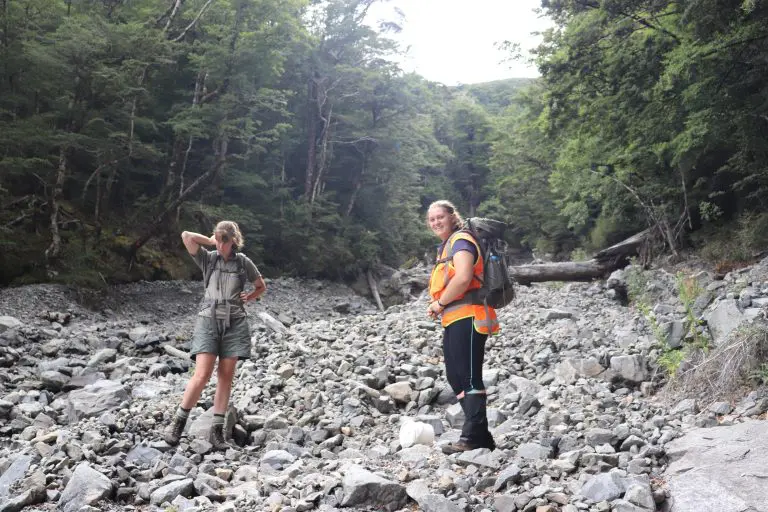Filled with nervous excitement as I began my new adventure, I boarded the plane from Palmerston North to Nelson curious about the places and people I would get to know in the next few weeks. Upon arrival in Nelson I searched the airport for Senior Biodiversity ranger Nik Joice who was to be my supervisor, contact person and ride from the airport. The Department of Conservation uniform and huge smile gave him away in the middle of the crowd. He bought me a coffee and chatted about the weeks ahead while we waited for the other Ambassador, Sian Moffitt, to arrive on her plane. Upon Sian’s arrival to the airport we drove to St. Arnaud, a quaint alpine village of 200 people nestled in between the peaks of the St. Arnaud range and Lake Rotoiti.
Sian and I will be spending the next three weeks in Nelson Lakes National Park helping with conservation work on the Rotoiti Nature Recovery Project (RNRP); a 5000ha ‘mainland island’ at the Northern end of the Southern Alps. A Mainland Island is an area that is isolated by a predator proof fence, geographic barrier or intensive trapping program; this spectacular area is one of five mainland islands in New Zealand. The area is famous for its stunning mountain views, alpine lakes, and lush beech forests. The remainder of the day was spent in the DOC office getting a safety induction. We were each issued a GPS, radio, sun block, first aid kit, day pack, high vis vest, and personal locator beacon. That evening, I settled in to the lovely Cummings Cottage I’ll be calling home for the upcoming weeks. Conveniently located across the road from the DOC office, the cottage is used as staff and volunteer accommodation. A handy five minute walk from the shops and filled with interesting people, it is an ideal temporary home, not to mention an unreal view from the bedroom window!
The day was hot and stagnant, and with the stunning lake Rotoiti just 300m away Sian and I decided to finish the day with a swim. When the Resident Long Fin eels decided to join us we decided it was time to call it a day!
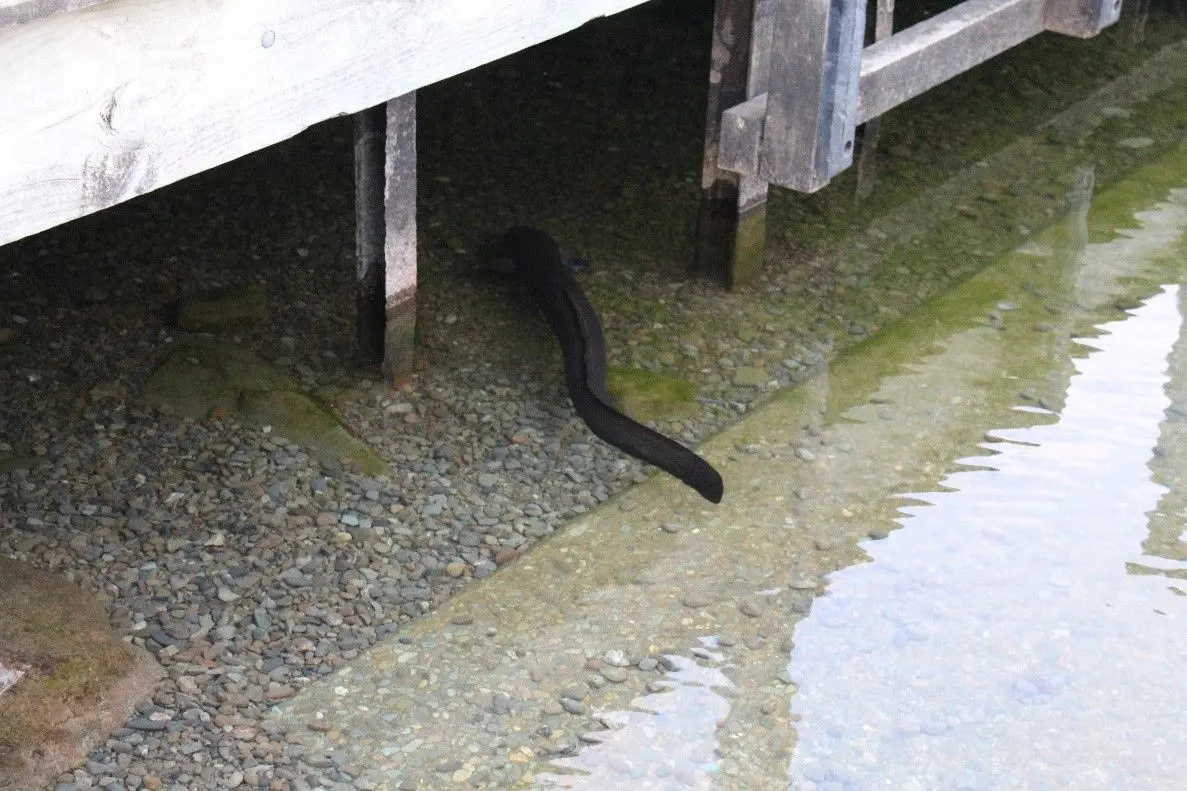
These guys can reach up to 80-90 years old before they migrate to Tonga to breed then die. Every evening they gather near the pier to thrill tourists.
Day Two
We started at a very reasonable 8 am at the DOC office, with boots gaiters packs and a high vis vest on it felt a bit like the first day of school, excited, over prepared and no idea what to expect. Here we met Nik and Jen Waite who would be showing us the ropes for the day, we jumped in a ute affectionately named Humvee and drove through a farm neighbouring DOC land onto an access road that lead to cell phone towers half way up the ridge. Bouncing our way along the road we were briefed on our job for the day.
Part of the RNRP is controlling numbers of introduced species, this includes the less than charming Vespula vulgaris, the common wasp. Introduced accidentally to New Zealand in the 1970s and with no natural predators the population has exploded. The density of wasps in the Nelson Lakes National park is one of the highest in New Zealand with numbers exceeding 10,000 wasps per hectare in some seasons. To support such a large population these voracious eaters eat native insects and most importantly honeydew.
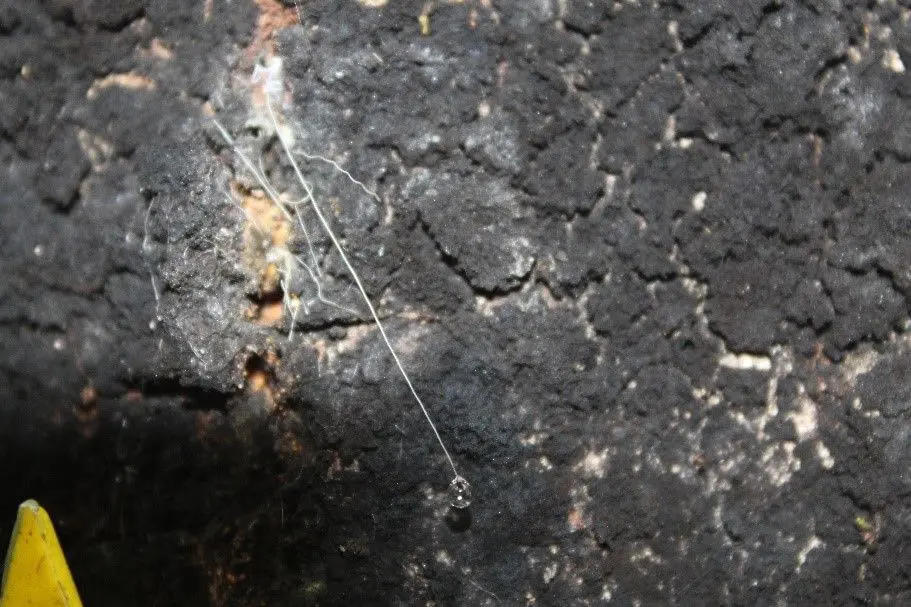
Honeydew is a sugary waste product that drips from the tail end from a scale insect that burrows into beech trees and feeds on sap. It plays a vital role in the ecosystem, providing food for native birds and insects.
The wasps can eat 60-90% of the honeydew in a forest, outcompeting natives for their food source; wasp population control therefore becomes instrumental in the preservation and protection of natives. Bait stations throughout the park have bait which helps reduce the population of wasps, and our job for the day was to remove old bait.
Nik handed us bucket and scraper, our high tech tools for the day. The bait was placed 8 days ago, and consists of chicken coated with the toxin which wasps bring back to their nests. We would go station to station through the concealed gridline of trap lines throughout the forest collecting the old bait.
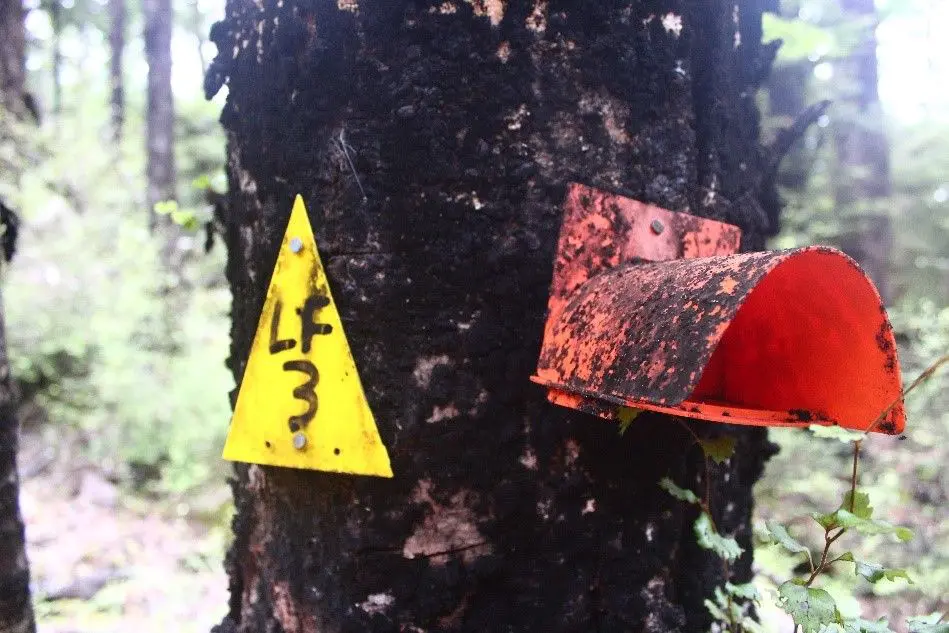
A wasp bait station.
We followed Jen for the first half of the day, she chatted easily as I puffed up the hills, climbing my way through the half cut tracks, tripping over roots and attempting to follow a string of pink triangles that suggested where the track was. Every fifty metres there was a station to scrape out, and my bucket rapidly started to fill with the bright blue of the old bait. When we reached the end of the line Sian, Jen and I split ways and each did a separate line on the way back.
At first I was nervous to be alone off track, but soon I was overwhelmed by the beauty and peace surrounding me. There was a feeling of serenity that encompassed the next two hours as I walked through the bush following the triangles that suggested the way and cleaning out the old stations. Bird songs surrounded me and I got visited by several fantails. Their inquisitive and playful nature was evident as they leapt from tree to tree catching insects and using their famous tails to manoeuvre. At the end of the track I was tired but fulfilled that I’d done something small to help this spectacular corner of nature.
Day 3
The intense heat of the last few days was brought to an end by an intense thunder storm! The clouds descending over the St. Arnaud range were awe inspiring. The DOC rangers had mercy on us and gave us inside jobs for the day. We spent the morning preparing bait bags and marking cards for tracking tunnels. These tunnels have a piece of meat on a mesh bag that entices small animals to run over an ink pad and track footprints across the card. This allows rangers to monitor numbers of rats, mice and stoats in areas they put the tunnels to judge the efficacy of their trapping efforts.
The work was repetitive and mind numbing with more than a hundred baits and cards to prepare, but the morning went quickly chatting to the rangers. It takes a special type of person who chooses a job like this; it does not pay well, it’s difficult work, always outdoors and often alone, often repetitive, and you must be honest and able to motivate yourself. Yet all the rangers I’ve been lucky enough to get to know have all been outstandingly friendly and kind, curious, and impassioned by the work they’re doing. Everyone here believes in what they do, and see it as part of a bigger picture. Some people are young and still completing training, others have been here for nearly a decade. Others still have switched from different careers entirely and see their conservation work as a way to give back in their later years. However they’re all driven by the importance of conservation.
New Zealand is a place unlike any other in the world, it only takes a step out of the city to realise how fortunate we are to call this place home. Things we take for granted like being able to see the natural environment from tracks and huts or hear the songs of Tui and Bellbirds in the morning, are only possible because off the incredible people like the ones I have the pleasure to be working with.
The afternoon was spent using a different type of skill, poster design!
I made a poster with wasp facts while Sian created one on creating lizard homes. They will be used at a future A+P show for education. In the past I’ve often stopped to read posters like these but never realised how much work went into their design and creation behind the scenes.
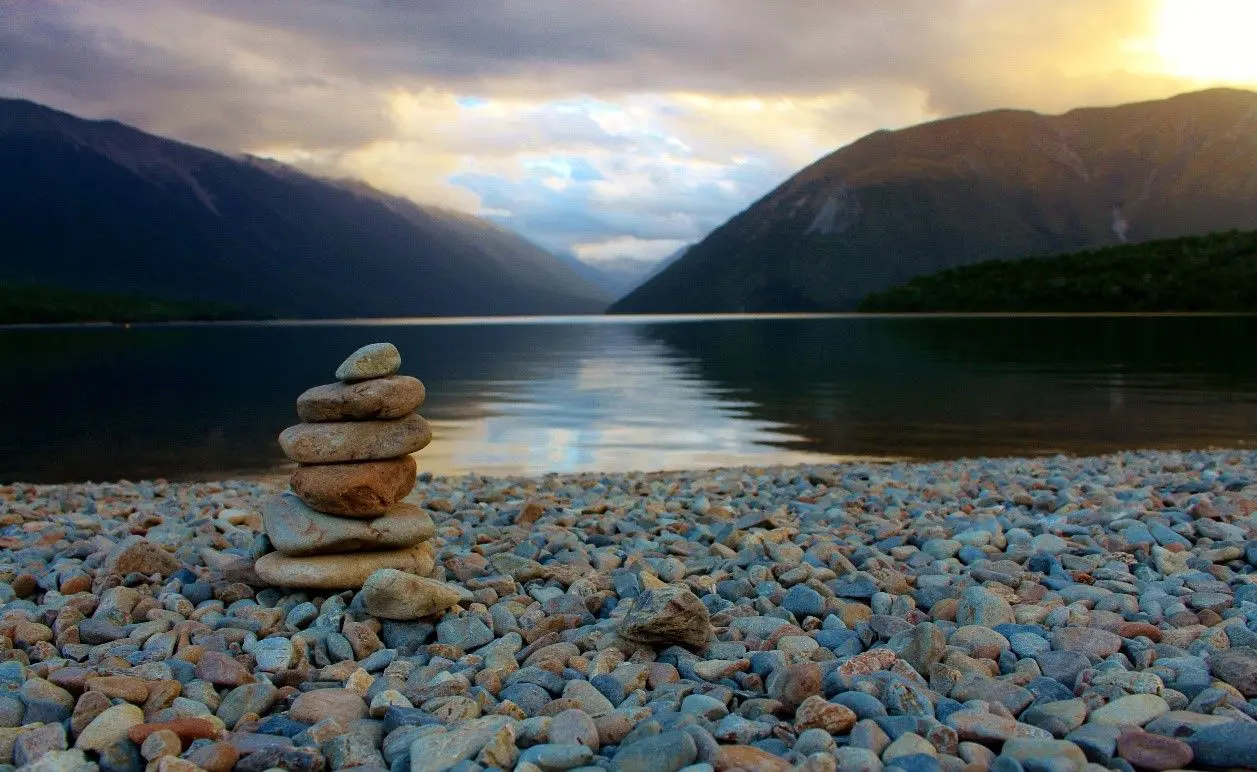
The beautiful Lake Rotoiti surrounded by bush protected by DOC.
Day 4
The worst of the bad weather has disappeared today, although a thick layer of low lying cloud masked the tops of thee ridges in fog. The morning started with a ride across the lake in a DOC boat named Kehu. As the vessel bounced across the lake with Sian, myself, and two more rangers we were rewarded with views of the lake, mountains, and stunning Whisky Falls just beside the lake. Halfway across the lake we abruptly stopped and beached the boat in the rocky shallows.
Out came the monitoring equipment, we were going to listen to a kiwi! Kiwi released to the park were fitted with a tracking anklet that monitors how many minutes they are active per day. This gives the fauna team clues about if they are mating, nesting, or foraging. All but three kiwi here have managed to slip their anklet off in the park, and today we were listening to one of those three, an adult male named Puremahaia. He has a nest just 100m from the lakes edge. As I stand in the boat pointing the antennae into the bush, little beeps start to break through the static, the number and frequency of beeps translates to minutes of activity. The tracker stores fourteen days of information, which we recorded. Having gathered all we needed we took off down the remaining half of the lake.
Here we split into two teams again, Sian and her ranger to clear 30 traps on one side of the lake and drive the boat back, and Graeme and I to do 85 and walk 8.5 kilometres back beside the lake. We were rebaiting the traps as we went with what they called “rabbit muesli bars” which were meat pressed into convenient meat cubes. We walked along the lakes edge clearing out traps of dead rats and stoats that had tried to get to the bait. These introduced species decimate native bird populations, preying on eggs and young birds. Only because of intense trapping regimes are kiwi like the one we monitored this morning able to live in their rightful environment with reduced risk of being attacked by a predator they did not evolve with.
We stopped for a break on a beach of the lake across from the falls, what an amazing office!! In early afternoon the weather turned to rain and we hurried along the track back to the warm DOC office. Another successful day.
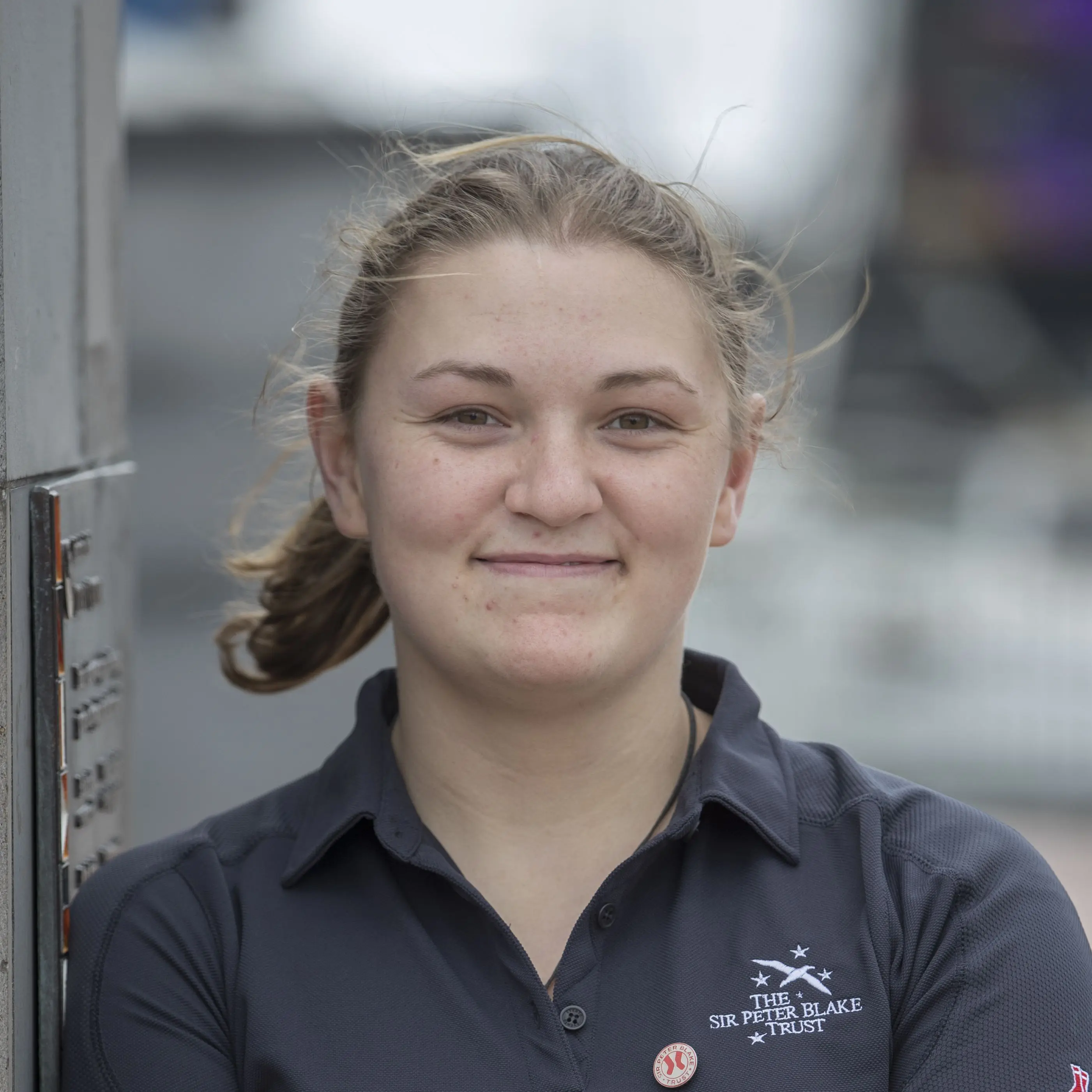
Marie Potthoff
BLAKE DOC Ambassador 2017
